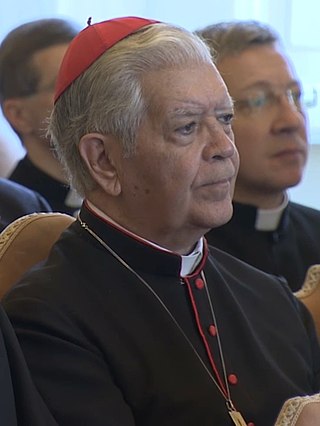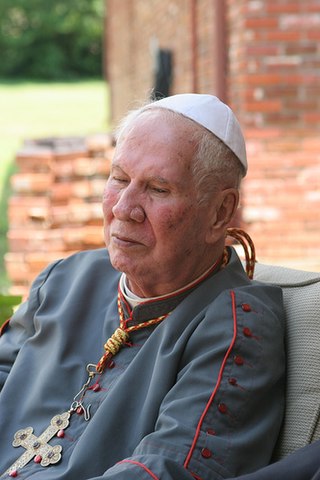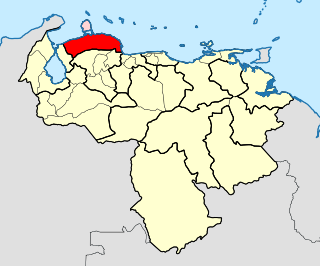| Part of a series on the |
| Catholic Church by country |
|---|
 |
| |
The Catholic Church in Venezuela is part of the worldwide Catholic Church, under the spiritual leadership of the Pope in Rome. The Roman Catholic Church in Venezuela comprises nine archdioceses, three vicariates, a military ordinariate, and two Eastern Rite exarchates under the spiritual leadership of the Pope, the Curia in Rome and the Venezuelan Bishops Conference.
Contents
- Theology
- History
- Colonial period
- After the independence of Venezuela
- 20th century
- Present day
- See also
- References
According to The World Factbook , 2009, 96% of the population is Roman Catholic. [1] In 2018, Latinobarómetro, estimated that 66% of the population is Roman Catholic. [2]
Since the Second Vatican Council, the Roman Catholic Church in Venezuela has been weakened by a lack of diocesan and religious vocations. Many priests serving in Venezuela are foreign-born. Before president Hugo Chávez's government took power, Protestant churches began to successfully proselytize, especially among the urban poor. However, this has diminished in recent years. [3] In the past, the Catholic Church did not have the funds, the personnel, or the enthusiasm to stem effectively this new challenge to its hegemony, but it believed it faced a greater threat with the new government of Hugo Chavez.
Although President Chávez self-identified as a practicing Roman Catholic, his policies have concerned the Venezuelan Roman Catholic hierarchy, especially in the area of religious education. Besides its universities and colleges, the Roman Catholic Church also administers some 700 other schools throughout the country, mostly subsidized by the Venezuelan state. In 2007, Cardinal Jorge Urosa, the Archbishop of Caracas, called for peaceful demonstrations against any direct government involvement in overseeing the Church's administration of schools. The Church has also been critical of the government for wanting to remove religious education from public schools during normal school hours. [4] [5]












